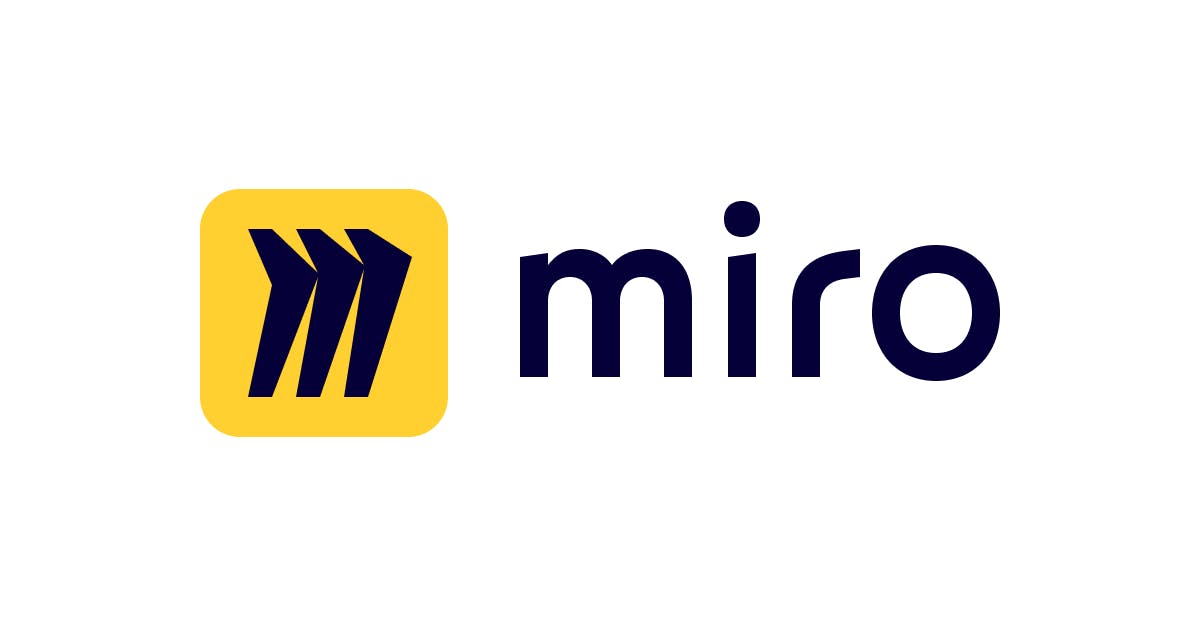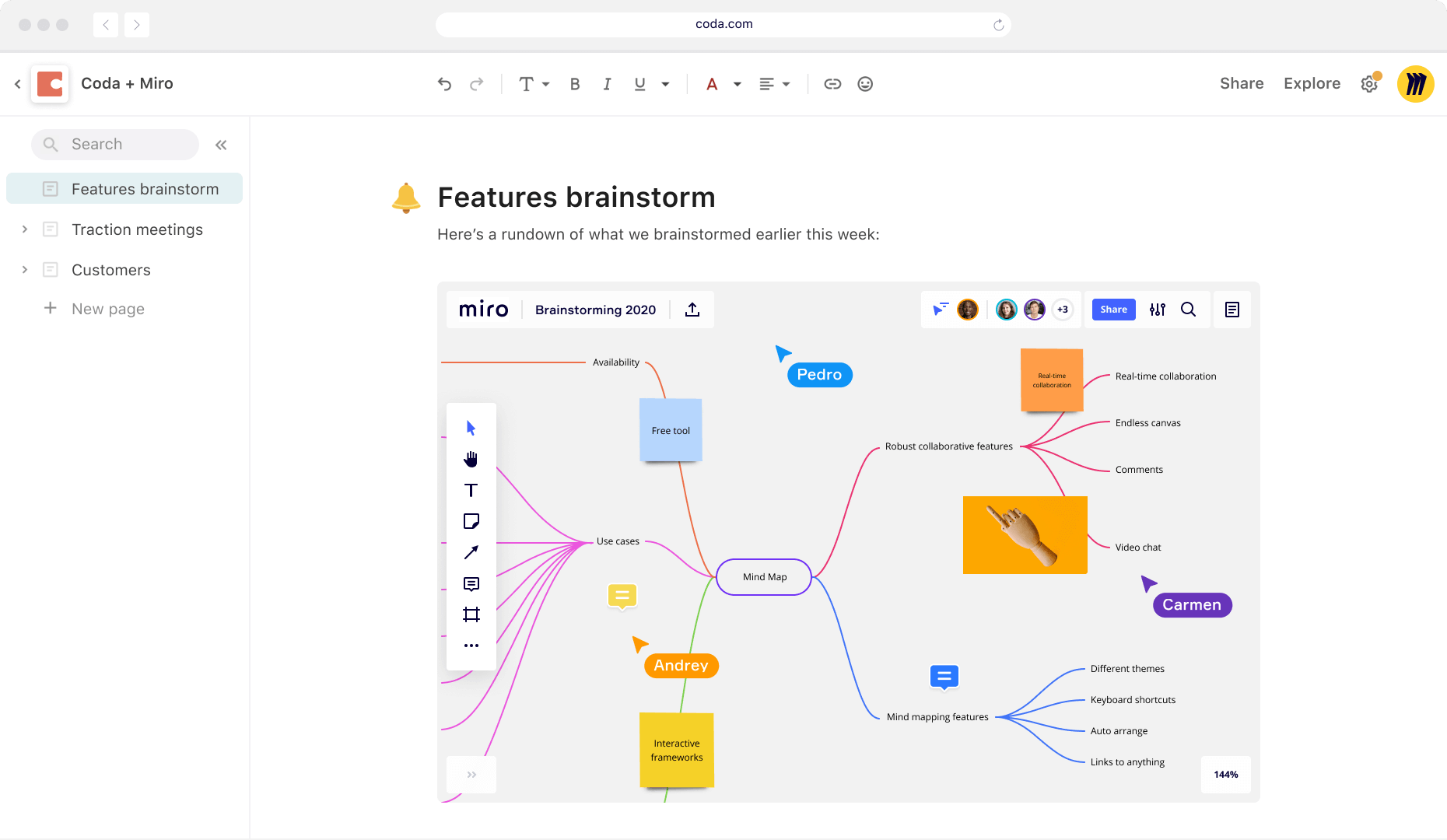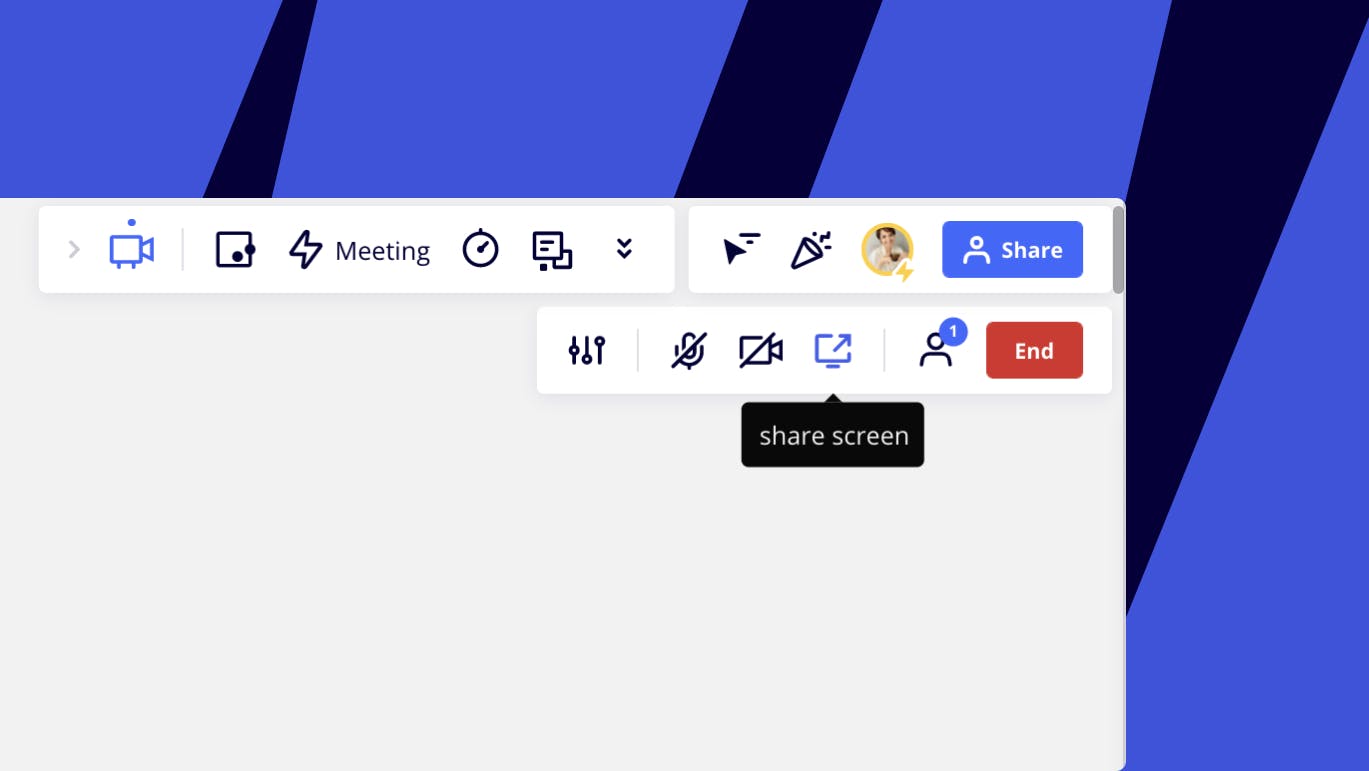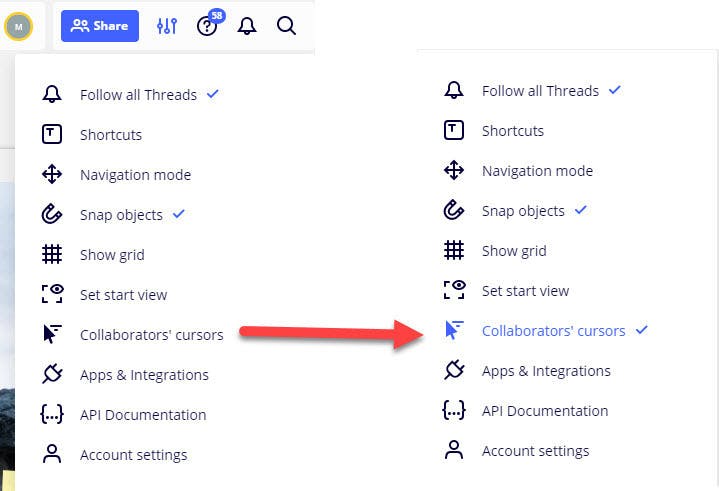Table of contents
No headings in the article.
With the recent shift to working remotely globally, teams must find ways to communicate and collaborate effectively and seamlessly. Various collaborative tools assist in making task management and collaborations achievable. Enter, Miro.
Miro is a digital “whiteboard” that helps team members brainstorm and work together, no matter where they stay. Miro presents a variety of features, which makes it ideal for individuals and teams.
Come with me as I explore this tool and see how it is different from other similar tools in this introductory post.
What Is Miro?

Miro is an online, cloud-based collaboration tool. It is a digital whiteboard used for design, goal mapping, research, and other diverse activities. Users of the whiteboard can create notes, impressions, mockups, scheme ideas, and leave feedback on other members' contributions. The software also enables communication via online chats or video calls.
In Miro, you'll also find a library of icons, wireframes, and other materials. Besides the pre-built templates, the tool also comes with varieties of sample project files that can serve as inspiration for your project. In addition, users can also upload images and files from their computers or Google Drive.
Launched in 2011, Miro (formerly known as RealtimeBoard) has grown in popularity in the past few years due to the growing remote work culture and its seamless efficiency. Lead remote design thinking workshops efficiently using this whiteboarding tool. Typical uses of Miro include creating a list of ideas, a wireframe of new concepts, mapping customer journeys, and customer conversion strategies.
Another vital feature of Miro is the provision for application integration and connection. You can easily connect to other virtual work tools such as Slack, Trello, Google Drive, etc. Miro also allows you to share your Miro board (think screen sharing) on video meeting tools like Hopin. Team members can add ideas or notes to your Miro board without opening another browser tab.
5 Interesting Things You Should Know About Miro

Miro aims to eliminate all obstacles to working productively and seamlessly. Miro is easy to use. New and experienced users can attest to this. It is easy to use with intuitive menus, promotes participation, is fun to work with, and saves time by providing shortcuts. Yes, shortcuts!
Furthermore, the products designed by Miro are capable of integration with other products, tools, and services. There are over 70 applications and integrations that fit how your team functions. Enjoy the benefits of bi-directional syncing and customization of fields that lets you work in Miro without switching to other tools.
Embed live editable Miro boards utilizing iFrames and native integrations like Zoom and Microsoft Teams and promises of more. Want to create custom integration? That is achievable with Miro’s developers' platform and its open API.
Miro boasts of supporting 200 users working simultaneously on editing a Miro board, even as hundreds of other users view on concurrently. You are assured of no lags as you pan across and zoom in on the board. Miro’s central product (the virtual whiteboard) is created and designed for a flawless user experience. Miro tailors all their products to work in a team-enabled environment.
Unlike the static templates offered by other whiteboard solutions, Miro provides an interactive template. Are you trying to create a goal map, a user story map, or more? Miro’s interactive templates possess objects that snap in place for easy use. Oh, and you can make personal custom templates to share with the rest of your team.
How Does Miro Promote Collaboration?

Miro works hard to design features that promote collaboration between team members and enhance user experience. Miro created their online whiteboard with collaboration as a core feature. Therefore, it should not be surprising that so many features enable you to work with others seamlessly. Let’s briefly consider some of these features, shall we?
Add Comment

Miro allows you to add comments to shared ideas, maps, etc., just like you can with Word or Google Docs but with a much better user interface.
Live Chat and Video call

You can also chat live with your team members as you work together on your team activity. Video calls can be placed on Miro (paid version) while working using Zoom, Hopin, etc. You can achieve all these without leaving Miro’s native application, eliminating the friction caused by using other tools.
Shared Screen

The screen sharing feature on Miro permits you to share your screen with other team members. Team members can also control the audio or video that is shared.
Real-Time Cursor Placement

As team members work within the whiteboard, you can see what they are working on via live cursor movement. The brilliance of this design feature of live cursors is that one use case scenario provides the second use case. The first use of live cursors help verifies that team members are present on the Miro board.
The second use is the provision of feedback when pointing out a section to other team members. You receive feedback that they see the feature in question when their cursors land on it.
Final Thoughts
Choosing a collaborative tool for teams and companies boils down to their specific individual needs and what collaborative software fulfills those needs. With the release of more collaborative tools, and existing ones ceaselessly improving their game, selecting a collaborative tool may be difficult.
If a team cannot easily communicate, other forms of collaboration might be unsuccessful. Sending emails back and forth to update your team takes time. Specific criteria determine the best collaborative software for your team or company.
Miro presents a rich array of features, not just one area that fits your collaborative needs. Miro offers ease of use that an intuitive interface provides. Because Miro is cloud-based, every team member will move in sync with others regardless of their location, as all activity and edits happen in real-time. Finally, the integration and compatibility of Miro with its features ensures that your team does not run between different software while working.
In a follow-up article, we shall explore this software further to see how its features perform and how users rate it.

